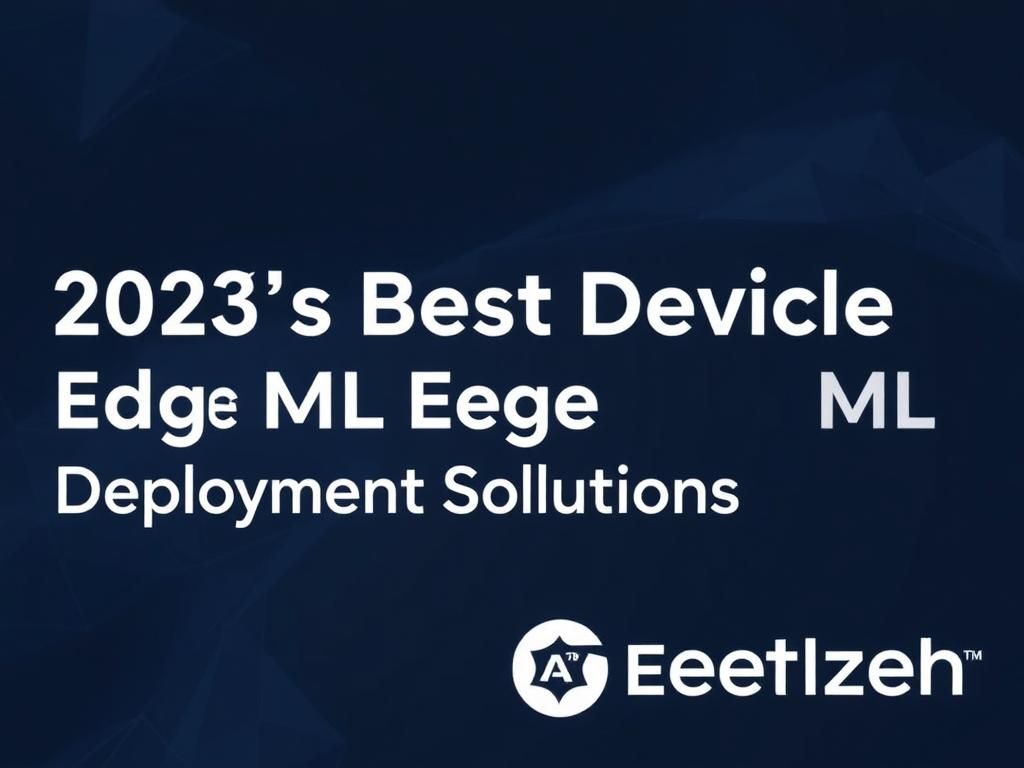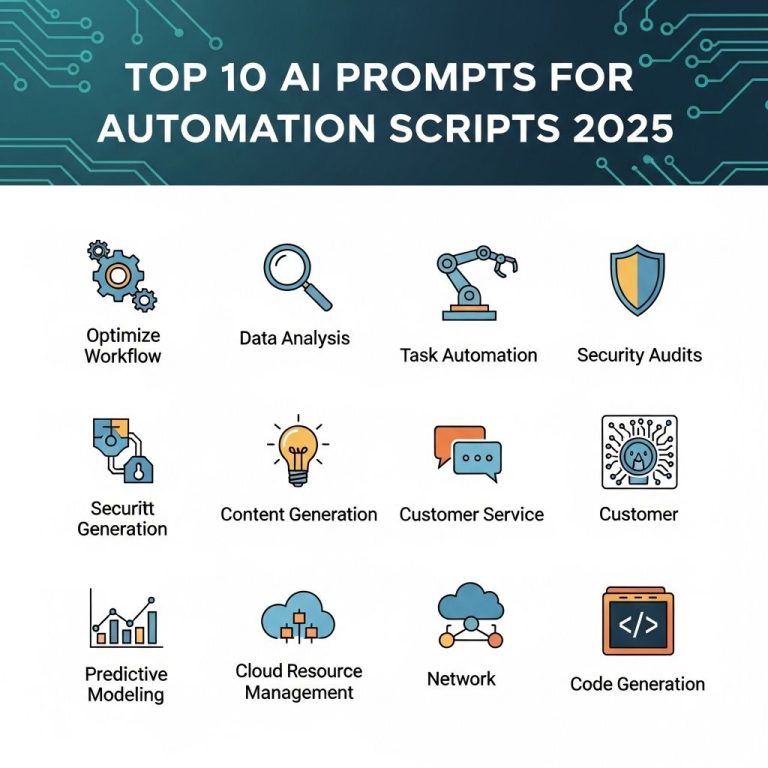The rapid evolution of technology has paved the way for machine learning (ML) deployments at the edge, making it easier and more efficient to process data closer to where it is generated. This trend is driven by the need for real-time analytics, reduced latency, and improved bandwidth usage, which are crucial for various applications ranging from autonomous vehicles to smart cities. As we look toward 2025, several edge device ML deployment solutions stand out as front-runners for their innovation, capability, and scalability.
Understanding Edge Computing and Machine Learning
Edge computing refers to the practice of processing data near the source of data generation rather than relying on a central cloud-based data center. Integrating machine learning into edge devices allows for intelligent data processing, enabling systems to make decisions without constant communication with a central server. This has significant implications for industries such as manufacturing, healthcare, and telecommunications.
Key Features of Effective Edge Device ML Solutions
1. Low Latency
One of the primary advantages of deploying ML at the edge is the reduction in latency. Applications that require instant response times, such as autonomous driving systems and real-time monitoring, greatly benefit from edge solutions. Here are key attributes to consider:
- Local data processing to minimize delay.
- Efficient model inference capabilities.
- Smart resource allocation based on workload demands.
2. Scalability
Solutions must scale with the growing number of devices and data sources:
- Support for a wide range of devices and form factors.
- Ability to handle increased data volumes seamlessly.
- Integration with existing cloud infrastructure for hybrid deployments.
3. Security
As edge devices often operate in distributed environments, security is paramount:
- Data encryption both at rest and in transit.
- Robust user authentication and authorization measures.
- Regular software updates and vulnerability management.
Top Edge Device ML Deployment Solutions for 2025
With the core features in mind, here are some of the most promising edge device ML deployment solutions anticipated to dominate in 2025:
1. NVIDIA Jetson AGX Orin
NVIDIA’s Jetson AGX Orin platform is tailored for high-performance AI computing, providing a powerful solution for edge deployments.
| Feature | Specification |
|---|---|
| GPU | 2048 CUDA Cores |
| AI Performance | 200 TOPS |
| Memory | 32 GB LPDDR5 |
| Connectivity | PCIe, USB, Ethernet |
2. Google Coral
Google’s Coral platform focuses on providing powerful ML capabilities on edge devices with its Edge TPU chip:
- Designed for running TensorFlow Lite models.
- Ideal for applications in smart home devices and IoT.
- Supports a range of development boards and modules.
3. AWS IoT Greengrass
Amazon’s AWS IoT Greengrass extends cloud capabilities to edge devices:
- Seamless integration with AWS services.
- Local ML inference and data processing.
- Device management and security protocols.
Use Cases of Edge Device ML Solutions
1. Autonomous Vehicles
In the realm of autonomous driving, edge ML solutions process data from sensors in real-time, enabling quick decisions crucial for safety and navigation.
2. Industrial Automation
Manufacturers leverage edge ML to predict equipment failures, optimize supply chains, and improve overall efficiency.
3. Smart Cities
Edge devices deployed in urban settings can analyze traffic patterns, monitor air quality, and enhance public safety through real-time analytics.
Challenges in Edge Device ML Deployments
While the benefits are significant, there are challenges associated with deploying ML solutions on edge devices, including:
1. Resource Constraints
Edge devices often have limited computing power, memory, and battery life, making it essential to design lightweight models that perform well under these constraints.
2. Data Privacy
Ensuring user data security while maintaining compliance with regulations such as GDPR can be complex in distributed systems.
3. Network Reliability
Edge devices may operate in environments with intermittent connectivity, necessitating solutions that can function effectively offline.
Future Trends in Edge Device ML
As we move towards 2025, several trends are shaping the landscape of edge device ML deployments:
1. Increased Adoption of 5G
The rollout of 5G networks will enable faster, more reliable connectivity, enhancing the performance of edge ML applications.
2. Federated Learning
This technique allows models to be trained across decentralized devices, enhancing privacy while still benefiting from collective learning.
3. Integration with Augmented Reality (AR) and Virtual Reality (VR)
Edge ML solutions will increasingly support AR and VR applications, providing immersive experiences powered by real-time data insights.
Conclusion
The future of ML deployment on edge devices is bright, driven by innovation and the need for real-time data processing across various sectors. Companies seeking to stay ahead of the curve should invest in robust, scalable, and secure edge ML solutions that can adapt to evolving technological landscapes. As we approach 2025, the key players and solutions highlighted in this article will likely lead the charge in transforming how we leverage machine learning at the edge.
FAQ
What are edge device ML deployment solutions?
Edge device ML deployment solutions refer to technologies and platforms that enable the deployment of machine learning models directly on edge devices, allowing for real-time data processing and analysis without relying on cloud resources.
Why is edge deployment important for machine learning?
Edge deployment is crucial for machine learning as it reduces latency, enhances data privacy, minimizes bandwidth usage, and allows for real-time decision-making, which is vital for applications such as IoT, autonomous vehicles, and smart cities.
What are the top benefits of using edge devices for ML?
The top benefits of using edge devices for ML include improved response times, reduced operational costs, increased data security, and the ability to function in low-connectivity environments.
How do I choose the right edge device for machine learning?
To choose the right edge device for machine learning, consider factors such as processing power, memory capacity, energy efficiency, compatibility with your ML frameworks, and the specific requirements of your application.
What are some popular edge devices for ML deployment in 2025?
Some popular edge devices for ML deployment in 2025 include NVIDIA Jetson series, Google Coral, Raspberry Pi, Intel NUC, and specialized IoT gateways equipped with AI capabilities.
What challenges can arise when deploying ML on edge devices?
Challenges when deploying ML on edge devices can include limited computational resources, power constraints, data management issues, and the need for robust security measures to protect sensitive information.




